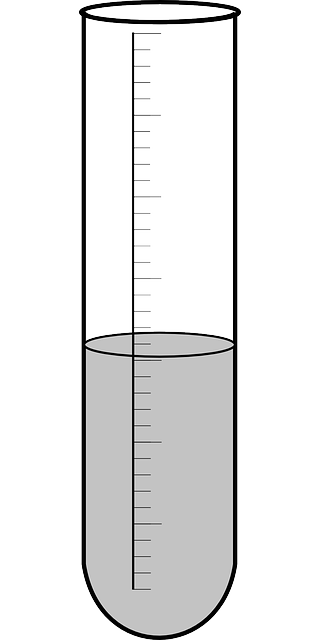The UK Standard Liver Blood Test plays a pivotal role in diagnosing iron deficiency by accurately measuring ferritin levels, which indicate the body's iron reserves. This test is a valuable tool for healthcare providers as it provides a comprehensive overview of liver function markers along with ferritin, enabling precise diagnosis between functional and true iron deficiencies. It is instrumental in early detection and treatment of iron deficiency, which can lead to anemia and affect overall health. The test is particularly relevant for at-risk populations, including vegetarians, individuals with gastrointestinal disorders, and those experiencing symptoms akin to anemia or fatigue. Understanding ferritin levels is crucial because they can signal both iron deficiency and excess; low levels suggest deficiency and may require dietary changes or supplementation, while high levels could indicate excessive iron storage or underlying inflammatory conditions/liver diseases. Medical advice is essential for interpreting abnormal ferritin readings within the broader clinical context, considering individual differences and additional diagnostic tests to manage iron-related conditions effectively.
Understanding and managing iron deficiency is pivotal for maintaining optimal health. A critical tool in this regard is the UK Standard Liver Blood Test for Ferritin, which serves as an indicator of iron stores in the body. This article delves into the importance of ferritin level testing, guided by expert insights, to help individuals and healthcare professionals navigate the complexities of iron health. We will explore how these tests can assist in diagnosing iron deficiency, interpret test results, and understand the implications of low or high ferritin levels. A comprehensive guide awaits for those seeking clarity on this essential health topic.
- Decoding Iron Health: The Role of UK Standard Liver Blood Tests in Assessing Ferritin Levels
- Understanding Iron Deficiency: When to Opt for a UK Standard Liver Blood Test for Ferritin
- Interpreting Your Results: What Do Low or High Ferritin Levels Indicate in the Context of Iron Deficiency?
Decoding Iron Health: The Role of UK Standard Liver Blood Tests in Assessing Ferritin Levels

In the realm of diagnosing iron deficiency, the UK Standard Liver Blood Test plays a pivotal role in assessing ferritin levels as an indicator of iron stores within the body. Ferritin, a protein that stores iron, is a key biomarker for iron status; its measurement provides insight into whether an individual’s body has sufficient iron reserves or if there is a deficiency. The UK Standard Liver Blood Test includes ferritin among its parameters, making it a comprehensive tool for healthcare providers to evaluate overall iron health alongside other liver function markers. This integrated approach allows for a nuanced understanding of the patient’s condition, as ferritin levels can be influenced by various factors, including inflammation and iron demand.
When iron deficiency is suspected, healthcare professionals in the UK often turn to the ferritin component of the Liver Blood Test. This test is particularly useful as it can detect both functional iron deficiency, where the body isn’t making adequate red blood cells despite having enough stored iron, and true iron deficiency, where iron stores are low. The results from this test guide further diagnostic steps or the initiation of treatment tailored to the individual’s needs. It is through the meticulous analysis of ferritin levels within the context of the UK Standard Liver Blood Test that healthcare providers can accurately pinpoint and address iron deficiency, thereby supporting patients in maintaining optimal health and well-being.
Understanding Iron Deficiency: When to Opt for a UK Standard Liver Blood Test for Ferritin

Iron deficiency is a common condition that can lead to anemia and has various implications for an individual’s health. It’s characterized by a lack of hemoglobin in the blood, which is often due to insufficient iron intake or iron loss that exceeds replacement. In such cases, a UK Standard Liver Blood Test for Ferritin plays a pivotal role in diagnosis and management. Ferritin, a protein containing iron, is an indicator of iron stores within the body. When the body has low ferritin levels, it suggests that iron reserves are depleted. This situation can arise due to chronic blood loss, which might be from sources like gastrointestinal bleeding or menstruation, or insufficient dietary intake of iron.
Identifying iron deficiency early is crucial for treatment and prevention of complications. The UK Standard Liver Blood Test for Ferritin is a non-invasive procedure that can be performed in various healthcare settings. It provides a reliable measure of the body’s iron stores and is often the first step in diagnosing iron deficiency. This test is particularly beneficial for individuals who may be at risk, such as vegetarians or those with gastrointestinal conditions. It is also useful for those experiencing symptoms like fatigue, pallor, weakness, or signs of anemia. Healthcare providers use the results of a ferritin test in conjunction with other diagnostic tools to confirm iron deficiency and to rule out other causes of similar symptoms. Knowing when to opt for this test is key to timely intervention and ensuring the well-being of patients.
Interpreting Your Results: What Do Low or High Ferritin Levels Indicate in the Context of Iron Deficiency?

Understanding your ferritin levels is crucial for assessing your iron status, especially as indicated by the UK Standard Liver Blood Test. Ferritin is a protein that stores iron in the body and its levels can reflect both iron deficiency and excess. Low ferritin levels often suggest iron deficiency, which can lead to symptoms such as fatigue, weakness, and paleness. It’s important for individuals with low ferritin to consider dietary changes or supplementation to increase their iron intake. Conversely, high ferritin levels may indicate an excess of stored iron, which could be a result of conditions like haemochromatosis, where the body absorbs too much iron. High levels can also stem from chronic inflammation or liver disease, as ferritin is an acute-phase protein that can rise with inflammation. Individuals with high ferritin readings should consult healthcare professionals to determine the underlying cause and appropriate course of action. Both low and high ferritin levels need to be interpreted in the context of additional clinical information, as ferritin levels can be influenced by factors such as age, sex, inflammation, and other health conditions. Therefore, a comprehensive evaluation is essential for accurate diagnosis and effective management of iron-related issues.
In conclusion, regular assessment of ferritin levels through a UK Standard Liver Blood Test is pivotal for early detection and management of iron deficiency. This article has demystified the complexities surrounding this critical health indicator, offering clear guidance on its significance and how to interpret test results. For those grappling with iron deficiency symptoms or at risk, understanding when and how to approach a UK Standard Liver Blood Test for ferritin can lead to timely diagnosis and effective treatment. It is advisable to consult healthcare professionals for personalized medical advice, but the information provided here underscores the importance of this simple yet informative test in maintaining iron health and overall well-being.
